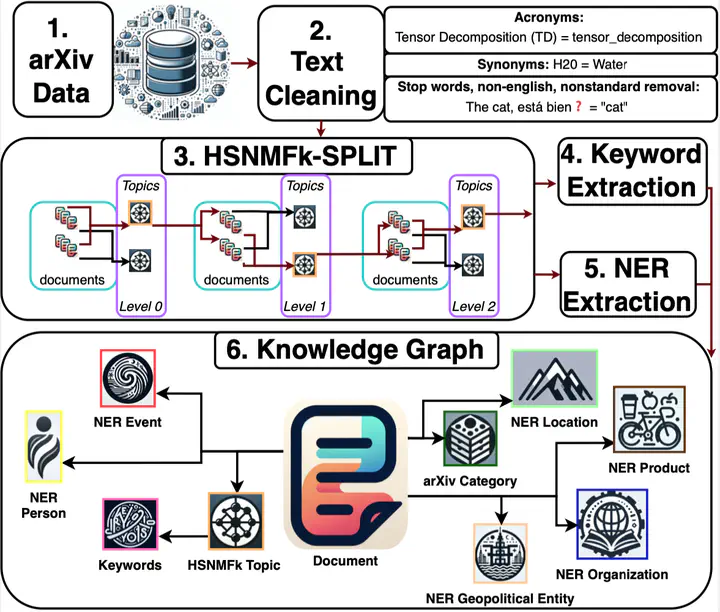
Abstract
Much of human knowledge in cybersecurity is encapsulated within the ever-growing volume of scientific papers. As this textual data continues to expand, the importance of document organization methods becomes increasingly crucial for extracting actionable insights hidden within large text datasets. Knowledge Graphs (KGs) serve as a means to store factual information in a structured manner, providing explicit, interpretable knowledge that includes domain-specific information from the cybersecurity scientific literature. One of the challenges in constructing a KG from scientific literature is the extraction of ontology from unstructured text. In this paper, we address this topic and introduce a method for building a multi-modal KG by extracting structured ontology from scientific papers. We demonstrate this concept in the cybersecurity domain. One modality of the KG represents observable information from the papers, such as the categories in which they were published or the authors. The second modality uncovers latent (hidden) patterns of text extracted through hierarchical and semantic non-negative matrix factorization (NMF), such as named entities, topics or clusters, and keywords. We illustrate this concept by consolidating more than two million scientific papers uploaded to arXiv into the cyber-domain, using hierarchical and semantic NMF, and by building a cyber-domain-specific KG.